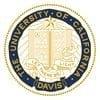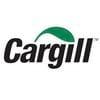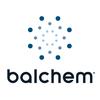The Road to Net Zero Livestock Production
Livestock production plays a vital role in ensuring global food security by providing essential nutrients. However, it also contributes to greenhouse gas emissions, with the main sources being feed production, enteric emissions (related to digestion), manure storage and application, and the energy used for various farm activities. To substantially reduce greenhouse gas emissions within these categories, various mitigation strategies can be implemented.
In feed production, adopting sustainable practices such as no-till farming, cover cropping, and improved nitrogen application methods can lead to significant emissions reductions. There are several options for reducing enteric methane emissions, including the use of inhibitors like 3NOP and bromoform-containing macroalgae, as well as rumen modifiers like tannins, nitrate, and certain essential oils.
Concerning manure management, employing anaerobic digesters and alternative manure treatment techniques can substantially reduce emissions. Additionally, implementing strategies like sameday incorporation of manure can help minimize nitrogen emissions into the air. Finally, transitioning to renewable energy sources for farm activities such as cooling, heating, and heavy machinery operation can further contribute to reducing greenhouse gas emissions in the livestock production sector.
While implementing all the mentioned strategies will result in a substantial reduction, it's important to note that complete elimination of emissions may not be achievable. Therefore, the journey towards achieving net-zero emissions in livestock production is not only essential for mitigating the impact of this industry on the environment but also for ensuring a sustainable and resilient global food system.
Keywords: livestock, net-zero, greenhouse gases
Introduction
Understanding Climate Neutrality or Net-Zero Emissions
Pathways to Achieving Net Zero Emissions
Conclusions
Costa, C., M. Wironen, K. Racette and E. Wollenberg. 2021. Global Warming Potential* (GWP*): Understanding the implications for mitigating methane emissions in agriculture. Wageningen, Kingdom of the Netherlands, CGIAR Research Program on Climate Change, Agriculture and Food Security (CCAFS). https://hdl.handle.net/10568/114632.
de Vries, W. 2018. Letter to the editor, Soil carbon 4 per mille: A good initiative but let's manage not only the soil but also the expectations. Geoderma, 309 111–112.
EPA. 2024. Draft Inventory of U.S. Greenhouse Gas Emissions and Sinks: 1990-2022. U.S. Environmental Protection Agency, EPA 430-D-24-001. https://www.epa.gov/ghgemissions/draftinventory-us-greenhouse-gas-emissions10 and-sinks-1990-2022.
FAO. 2023. Methane emissions in livestock and rice systems – Sources, quantification, mitigation and metrics. Rome. https://doi.org/10.4060/cc7607en. https://doi.org/10.1016/j.jclepro.2020.125260
Innovation Center for U.S. Dairy. 2022. U.S. Dairy Net Zero Initiative. https://www.usdairy.com/sustainability/environmental-sustainability (Accessed March 5, 2024).
Intergovernmental Panel on Climate Change (IPCC). 2021. Climate Change 2021 – The Physical Science Basis: Working Group I Contribution to the Sixth Assessment Report of the Intergovernmental Panel on Climate Change. Cambridge University Press.
Intergovernmental Panel on Climate Change (IPCC). 2023. Climate Change Synthesis Report. https://www.ipcc.ch/report/ar6/syr/downloads/report/IPCC_AR6_SYR_LongerReport.pdf (Accessed March 5, 2024).
Jackson, R.B., M. Saunois, P. Bousque, J. G. Canadell, B. Poulter, A. R. Stavert, P. Bergamaschi, Y. Niwa, A. Segers, and A. Tsuruta. 2020. Increasing anthropogenic methane emissions arise equally from agricultural and fossil fuel sources. Environ. Res. Lett. 15 071002. https://doi.org/10.1088/1748-9326/ab9ed2.
Kebreab, E., A. Bannink, E.M. Pressman, N. Walker, A. Karagiannis, S. van Gastelen, and J. Dijkstra. 2023. A meta-analysis of effects of 3-nitrooxypropanol on methane production, yield, and intensity in dairy cattle. J. Dairy Sci. 106 927 – 936. https://doi.org/10.3168/jds.2022-22211.
Kebreab, E., F. Mitloehner and D.A. Sumner. 2022. Meeting the call: How California is pioneering a pathway to significant dairy sector methane reduction. University of California, Davis.
Minasny, B., B.P. Malone, A.B. McBratney, D.A. Angers, D. Arrouays, A. Chambers, V. Chaplot, Z.S. Chen, K. Cheng, B.S. Das, D.J. Field, A. Gimona, C.B. Hedley, S.Y. Hong, B. Mandal, B.P. Marchant, M. Martin, B.G. McConkey, V.L. Mulder, S. O'Rourke, A.C. Richer-de-Forges, I. Odeh, J. Padarian, K. Paustian, G. Pan, L. Poggio, I. Savin, V. Stolbovoy, U. Stockmann, Y. Sulaeman, C.-C. Tsui, T.-G. Vågen, B. van Wesemael, L. Winowiecki. 2017. Soil carbon 4 per mille. Geoderma 292 59–86.
Moate, P.J., S.R.O. Williams, V.A. Torok, M.C. Hannah, B.E. Ribaux, M.H. Tavendale, R.J. Eckard, J.L. Jacobs, M.J. Auldist, W.J. Wales. 2014. Grape marc reduces methane emissions when fed to dairy cows. J. Dairy Sci. 97 5073-5087. https://doi.org/10.3168/jds.2013-7588.
Mottet, A., C. de Haan, A. Falcucci, G. Tempio, C. Opio, P. Gerber. 2017. Livestock: On our plates or eating at our table? A new analysis of the feed/food debate. Global Food Security, 14, 1- 8. https://doi.org/10.1016/j.gfs.2017.01.001.
Naranjo, A., A. Johnson, H. Rossow and E. Kebreab. 2020. Greenhouse gas, water, and land footprint per unit of production of the California dairy industry over 50 years. J. Dairy Sci. 103 3760 -3773. DOI:10.3168/jds.2019-16576.
Ridoutt, B. 2021. Climate neutral livestock production – A radiative forcing based climate footprint approach. J. Cleaner Prod. 291 125260.
U.S. Roundtable for Sustainable Beef. 2022. Air & Greenhouse gas emissions https://www.usrsb.org/goals#gasEmissions (Accessed March 5, 2024).
van Gastelen, S., E.E.A. Burgers, J. Dijkstra, R. de Mol, W. Muizelaar, N. Walker and A. Bannink. 2024. Long-term effects of 3-nitrooxypropanol on methane emission and milk production characteristics in Holstein Friesian dairy cows. J. Dairy Sci., in press.

For the non-nutritionists who wish to know more about what data is needed in order to have a new factor (or non-nutritive) element calculated or evaluated in the Least Cost Formulation, you may find what you need in a recent book published by Dr. Todd Applegate of the University of Georgia. The book is entitled Advances in Poultry Nutrition. I was pleased to contribute the chapter entitled "Poultry feedstuff management and feed formulation utilizing big data". One of my primary goals was to show a user who has "new data" how to get the data into use by the Formulation program. Once the data is in the Formulation program, the new data can be use to quantify what the additional cost of the new product or factor contributes to the formula.
My contribution to that effort was the development of software to minimize the cost of the Feeds. The use of Linear programming in the Feed Formulation software was the tool that was needed. This allowed users with the proper data to produce a better feed based upon all of the costs for the ingredients.
Your article is strongly recommending that users develop or find the costs of the many factors like GHp, GHG, and more. Once the numeric values of the factors per each ingredient is known or assumed, a person generating will know the amount of the factor is in each ton of feed and/or one could actually formulate with limits on that particular Factor. Knowing the "number" for each feed is the beginning of users to make decisions as to how much of that factor they can afford and/or how much of that factor is acceptable.





.jpg&w=3840&q=75)







